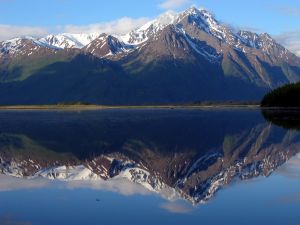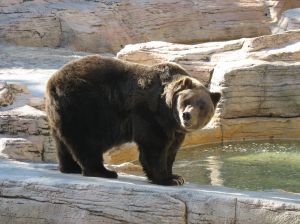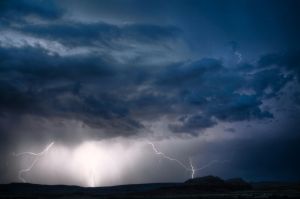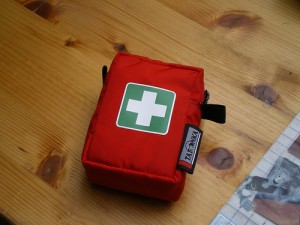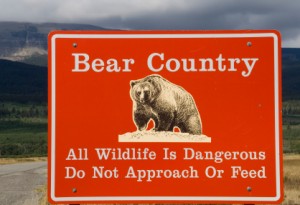With the Smokies in my backyard, I know how easy it is to stumble upon a bear’s domain. It’s so important that guests in the Smokies understand that the mountains serve as the home of the bear–and the bear looks at humans as the intruders, not vice-versa. If you are camping in the Smokies, you should know that bears in the Park are wild. While they may look cute and cuddly, they aren’t. It’s true that bear attacks in the Smokies are rare, but they have occurred. If you cross paths with an angry bear, here are some guidelines that can help you stay in control and come out alive.
Do not approach any bear that you see. If you see a bear and he stops what he is doing, the chances are high that he has also seen you. This means that you are too close. Slowly start to back away from the bear while keeping an eye on him. Put as much distance between you and the bear as possible.
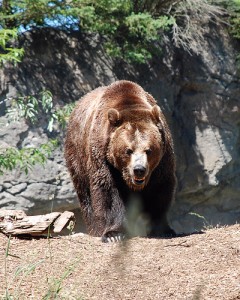
Angry Bear - Photo by Lara Schneider
If the bear starts to follow you, but he isn’t acting aggressive, change your direction by walking backwards. If the bear continues to follow you after you’ve changed your route, stand still. If he continues to come closer, begin shouting at him. Act as aggressive as possible. This has been known to intimidate bears and make them run off. The most important thing you can remember is to never run or turn your back on a bear.
If the bear is still trailing you, make yourself seem as large as possible. You can do this by moving to higher ground, or standing on something such as a large rock. If the bear continues to approach after you have tried to intimidate him with your voice and acting large, begin to throw non-food objects at him. This can include rocks. If possible, find a large stick to hold. It can help you fight off the bear if he should continue to approach.
If the bear begins to act aggressive and you have food on your person, the chances are very high that he smells it. Drop the food, back away, and put as much distance between you and your food as possible. Many times the bear will stop focusing on you, stop at the food, and start investigating it.
If the bear ignores the food and continues to come after you and you are physically attacked, fight back as much as you can. Use anything you can to fight off the bear, like large sticks and rocks. Scream and holler at the bear. Make as much noise as possible. Not only can this scare the bear, it can also alert others to your predicament.
While bear attacks in the Smokies are somewhat rare, they do happen. During the summer of 2008, a child was attacked by a black bear in the Smokies. His father fought him off, the child ran away, and the bear followed and attacked the child again. After taking a severe beating from the father, the bear eventually ran off. The bear was tracked and found by park officials and put down.
Knowing what to do in the event of an attack can help you survive. Remember, never turn your back on a bear, and if it comes down to it, fight the bear with everything in your power. Heeding these two tips can mean the difference between life and death.


